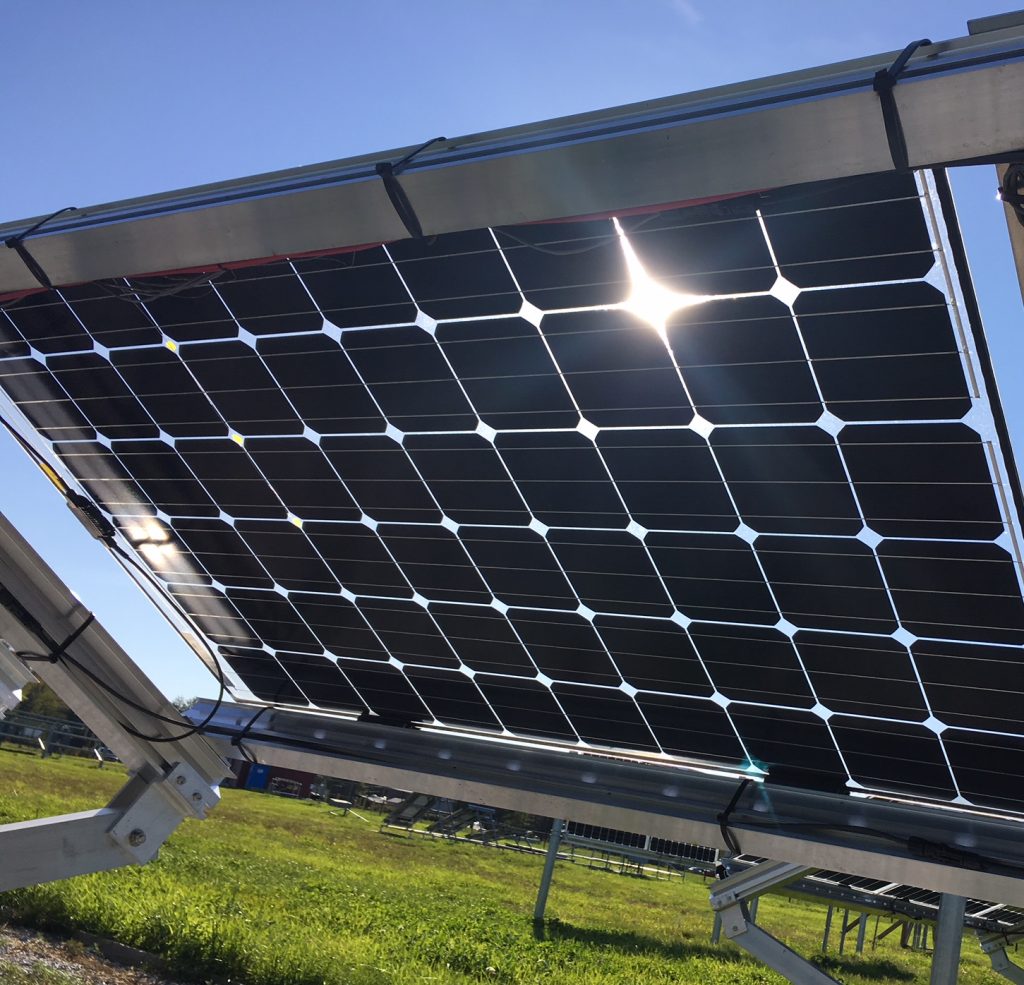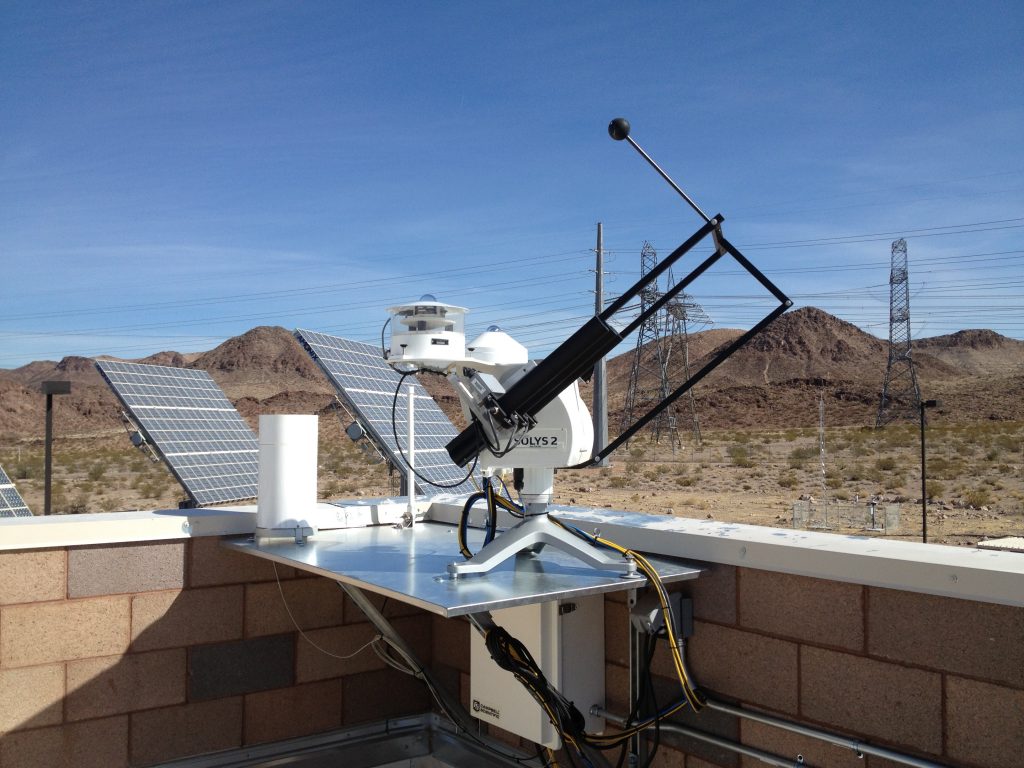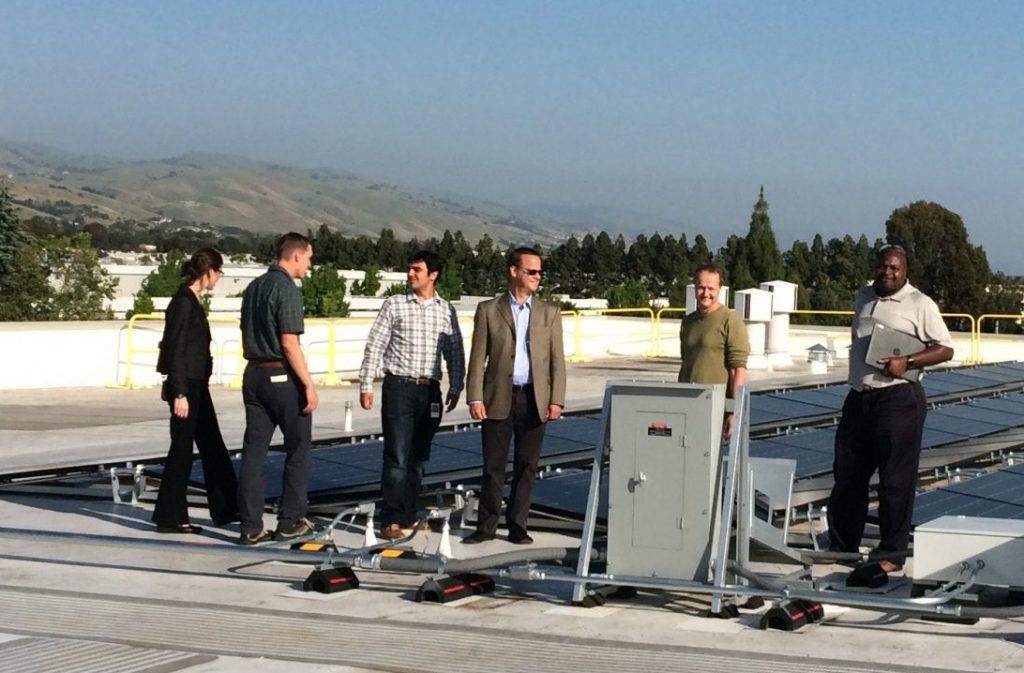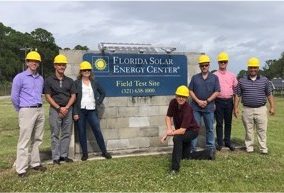Founded in 2012, the U.S. DOE Regional Test Centers (RTCs) for Emerging Solar Technologies help drive the deployment of new solar technologies, demonstrating their robustness across different climate zones, and thus play a critical role in helping accelerate the nation’s transition to a low-carbon economy.
Under the technical oversight of Sandia National Laboratories, the RTC program reflects Sandia’s decades of experience in the characterization and performance evaluations of solar technologies and the Lab’s commitment to technical excellence. Operated in partnership with the National Renewable Energy Laboratory, the University of Central Florida, Michigan Technological University and the University of Nevada, Las Vegas, the program also draws broadly on the expertise and capabilities of its partner institutions.
Collectively, the five sites in the RTC program generate validated performance data to support the commercialization of existing and prototype photovoltaic (PV) technologies and provide a platform for research to improve the efficiency and resilience of PV systems across different climates.

The Value of the RTC Network to the Nation

Data are vitally important in this era of rapid solar innovation, with its outpouring of new materials and higher-efficiency cell and module designs. Multi-year field reliability assessments under realistic climate conditions should be routinely integrated into the product-development cycle, especially for new cell types and module architectures. Such studies should include high-quality monitoring of components and systems to enable comparative performance assessments and to capture early failures as well as power output over time. The RTCs are a unique national resource that enables industry to have their products validated across multiple climates. Learn More
The RTCs lead to technological Improvements
![NM_System_From_Above[3][4]](https://www.sandia.gov/app/uploads/sites/185/2022/03/NM_System_From_Above34-e1459176861615-1024x509.jpg)
The RTCs contribute to innovation and growth in the solar industry in multiple ways:
1. Product Validation
The RTCs provide the data and analysis to demonstrate how new products perform over time and in different climates. Companies apply for an RTC study and, if accepted, partner with the National Labs on the design and execution of a study that best aligns with the partner’s technical objectives. These studies help accelerate the commercialization of innovative and more efficient solar product, lowering costs and expanding markets. All data are protected by a non-disclosure agreement and shared only with the industry partner, unless the partner decides otherwise.
2. Technological Innovation
Access to the technical excellence, engineering capabilities, and credibility of the National Labs benefits industry by providing technical support to drive innovation.
3. Photovoltaics R&D
In addition to supporting industry needs, the RTCs are a catalyst for research, fostering partnerships between the National Labs, universities and private companies to address both mainstream and emerging research challenges of broader interest. The DOE-funded project titled "Increasing the Reliability and Performance of PV systems in Northern Regions" is one such example.
4. Multi-climate Performance Data
Data available to the public includes performance data from each RTC’s reference PV array, synchronized to onsite meteorological data. The data contributes to advanced performance models, bringing greater accuracy to levelized-cost-of-energy projections.
5. Training and Education
Defined by a world-class infrastructure, exacting protocols and diversity of technologies, the RTCs provide a platform for state-of-the-art solar-training and education, with curricula that reflect collaborations between the local host institution and Sandia.
6. Early-Warning Mechanism for Reliability Issues
Automated data reports alert the National Labs to system or data failure; follow-up diagnostics allow the rapid identification and repair of faulty instrumentation.
Providing independently validated performance data to support the commercialization of prototype PV technologies. Long-term and cross-site investigations can identify widespread problems affecting the reliability of PV systems and components. The RTCs also generate data on degradation rates, which are important to lifetime performance.
Common Instrumentation and Measurement Platform

The RTCs provide
A multi-site platform for product evaluation, representing varying conditions of temperature, humidity and irradiance.
Each RTC has
- Grid-tied open racking that can accommodate technologies and systems of varying sizes
- World- class meteorological instrumentation, high-resolution monitoring equipment, and a common set of operating protocols to ensure data quality across the program.
Irradiance Instrumentation
Producing a set of standardized protocols for PV system validation, applicable to different climates and settings. Learn More
- Global Horizontal Irradiance (GHI)
- Diffuse Horizontal Irradiance (DHI)
- Direct Normal Irradiance (DNI)
- Plane-of-Array (POA)
Meteorological Instrumentation
- Precipitation gauge
- Wind speed and direction
- Barometric pressure
- Relative humidity and temperature
Reference PV System
Each site also has a 6kW baseline PV system, equipped with a high-fidelity monitoring system that includes string-level DC voltage and current measurements, POA irradiance, a POA reference cell, and back-of-module temperature sensors. Baseline arrays provide a common reference to which new module technologies can be compared.
Data Collection
Data is collected at a frequency of about 5 seconds, averaged per minute and transferred to Sandia, where it is analyzed daily. All irradiance sensor are cleaned twice weekly and calibrated every two years.
How to Participate in the RTC Program

Why Partner
The RTCs are a singular resource that gives solar companies access to multi-climate research facilities, high-fidelity performance data and the technical excellence of the National Labs. This unique pairing of industry with Lab expertise helps drive both product innovation and the commercialization of new products.
More specifically, RTC participation included the following:
- Grid-tied infrastructure that can accommodate a diversity of technologies and installation of different sizes
- Access to National Lab expertise and the Lab’s broad engineering and problem-solving capabilities
- Validation approach that included confidential bankability reports
- Relationship with the RTC Team and National Labs that supports information sharing and opportunities for future collaboration.
FOR MORE INFORMATION, CONTACT:
Dr. Laurie Burnham
Photovoltaics Research Group
Sandia National Laboratories
lburnha@sandia/gov
505-845-7354
A Multi-Institutional Collaborative

SANDIA NATIONAL LABORATORIES
Laurie Burnham
RTC Program Lead
Bruce King
Prinicipal Investigator and Performance Team Lead for Photovoltaics
Daniel Riley
Instrumentation and monitoring Lead
NATIONAL RENEWABLE ENERGY LABORATORY
Bill Sekulic
Senior researcher at NREL and RTC lead
Chris Deline
Research engineer and technical lead for NREL’s PV System Performance Group.
MICHIGAN TECHNOLOGICAL UNIVERSITY
Paul Dice
Engineering researcher and technical lead for the MI RTC.
Ana Dyreson
Faculty member and researcher at MIchigan Tech.
UNIVERSITY OF CENTRAL FLORIDA
John Sherwin
Program director at UCF’s Florida Solar Energy Center and technical lead for the FL RTC
UNIVERSITY OF NEVADA, LAS VEGAS
Aaron Sahm
Research engineer at UNLV and technical lead for the NV RTV
Five RTC sites
![Image of Nevada Test Site_Sign_Map_Only[1]](https://www.sandia.gov/app/uploads/sites/185/2022/05/Nevada-Test-Site_Sign_Map_Only1-1024x741.png)
The RTC program has five sites representing a range of climates.
Albuquerque, NM
The NM RTC is co-located with Sandia’s Photovoltaic Systems Evaluation Laboratory, which is a multiple-user facility that conducts research on emerging PV technologies and supports the detailed characterization and performance analysis of modules and components.
Special features include both outdoor and indoor characterization capabilities:
Two-axis tracker for measuring a module’s performance under controllable conditions.
High-fidelity meteorological instrumentation including spectral radiometer and sky camera
Long-pulse, Class AAA solar simulator to measure the electrical performance of modules before and after field deployment
Imaging chamber for infrared, electroluminescence (EL) and dark current and voltage (dark-IV) measurements for cell and module diagnostics
Golden, CO
The CO RTC is co-located with the National Renewable Energy Laboratory’ Outdoor Test Facility. Special features include:
High-Bay Accelerated Testing Laboratory that allows for accelerated weathering of PV modules under controlled conditions.
Failure Analysis Laboratory that enables current testing and diagnostic imaging to identify failure mechanisms
Optical Mechanical Characterization Laboratory that supports the optical and mechanical characterization of PV components including their ability to transmit and reflect light and also their strength and integrity.
Calumet, MI
The Michigan Regional Test Center (MI RTC) is located in Calumet, Michigan adjacent to the Advanced Power Systems Center at Michigan Technological University.
The site is distinguished by its climate: the northern Michigan location provides ideal field conditions for evaluating solar technologies in winter: snow and low temperatures here are both predictable and persistent: the average annual snowfall is 202 inches and can be as much 300 inches or more.
Other features include fixed-tilt racking, a mock roof and a set of module-scale load sensors that can measure snow and wind loads across a module as well as cold loading.
Cocoa, FL
The FL RTC is located on a 10-acre site owned by the Florida Solar Energy Center in Cocoa, FL, where the climate is consistently hot and humid.
Site Partner: University of Central Florida
Associated capabilities include:
A long-pulse Class AAA solar simulator for measuring the electrical performance of modules
Electroluminescence (EL), infrared (IR), acoustic and optical imaging
Materials characterization that includes ultraviolet/visible spectroscopy, secondary-ion mass spectroscopy (SIMS), Auger and photoluminescence (PL).
Henderson, NV
Located less than 20 miles south of Las Vegas, this site is defined by high irradiance, high heat and limited precipitation.
Site Partners: the University of Nevada, Las Vegas and the Southern Nevada Water Authority (SNWA).
Special features include:
- Installation labor, and other technical assistance, provided by SNWA
- Onsite office for student education and research
- High-security site (guards on duty 24/7)
- Isotype cell sensor for solar spectral measurements
- Technologies represented include: concentrated photovoltaics, mono-crystalline silicon (both n- and p-type), bifacial- and shingled-cell modules, anti-reflective coatings, and sensor adhesives, with more technological diversity on the way.
- Research site for concentrated photovoltaic (CPV) systems